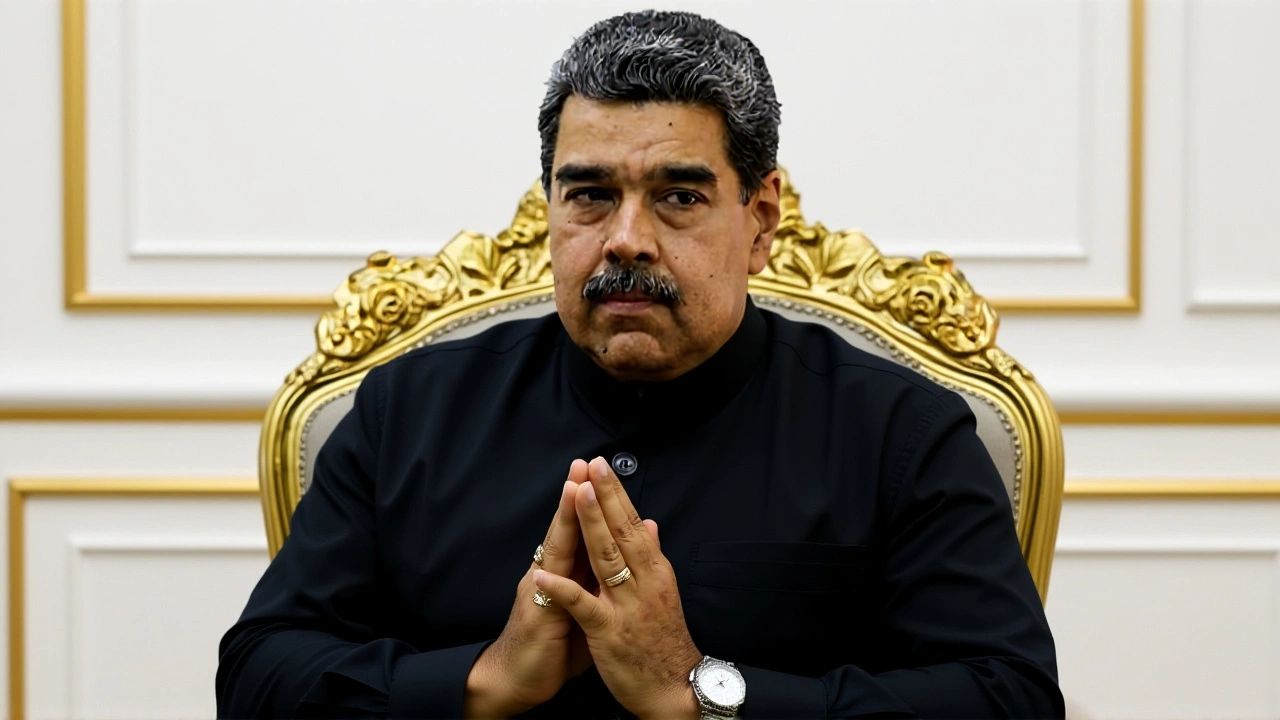In the latest release of the regional Prosperity Index, the Dominican Republic vaulted into the top five economies of Latin America and the Caribbean, landing at 37.4 points out of 100 and ranking fifth among 23 nations. The report, compiled in June 2025 using data from the World Bank and the United Nations Development Programme (UNDP), placed the Caribbean nation just behind Chile, Uruguay, Panama and Argentina – a notable leap over larger economies such as Brazil and Colombia.
Only a handful of countries in the region have managed to keep their growth engines humming amid a global slowdown, and the Dominican Republic’s surge is anchored primarily on a tourism boom and strong remittance flows. From January through April 2025 the island welcomed 4.3 million visitors, with April alone breaking records by topping one million arrivals – the busiest month the sector has ever seen.
During the International Monetary Fund’s (IMF) Article IV mission in September 2025, Héctor Valdez Albizu, Governor of the Banco Central de la República Dominicana, and Finance Minister Magín Díaz fielded a series of questions about fiscal policy, monetary liquidity and the country’s resilience to external shocks. The IMF staff concluded that real GDP growth should hover around 3 % for 2025, buoyed by the government’s reformulated budget and targeted fiscal stimulus.
Official statistics show that the Dominican economy produced a purchasing‑power‑parity (PPP) GDP of $293.365 billion in 2024, expanding at a 5.4 % real rate with per‑capita PPP output of $27,120. Inflation ran at 4.2 % and unemployment stood at 6.0 % in the same year, while 23.9 % of the population lived below the poverty line as of 2021. Tourism now accounts for more than 15 % of GDP and has delivered roughly 40 % of the nation’s recent growth, according to government data.
Understanding the Prosperity Index
The Prosperity Index merges 12 pillars – ranging from economic quality to personal freedom – to generate a composite score. In the 2025 edition, the Dominican Republic vaulted six places from its 2011 position, landing 68th worldwide and 6th in the Caribbean sub‑ranking. Transparency International’s Corruption Perceptions Index also reflected improvement, moving the country to 104th place in 2024, up from 137th in 2020.
Tourism’s Record‑Setting Surge
Tourist arrivals hit 4.3 million in the first four months of 2025, eclipsing the pre‑pandemic 2022 total of 3.2 million. The surge was driven by aggressive marketing of the island’s beach resorts, an expanded cruise‑ship schedule, and the reopening of the Las Vegas‑style “Punta Cana Convention Center” which attracted several mega‑events.
- April 2025: >1 million arrivals – the highest monthly total ever recorded.
- Tourism contributes >15 % of GDP and ~40 % of annual growth.
- Remittances add another 8 % of GDP, reinforcing household consumption.
- Hotel occupancy averaged 78 % in Q1 2025, up from 62 % in Q1 2024.
Industry officials credit the rise to a streamlined visa‑on‑arrival policy and a $250 million public‑private partnership that upgraded airport runways and highway links to key coastal zones.
IMF Assessment and Fiscal Outlook
In its September 15, 2025 staff concluding statement, the IMF highlighted three pillars of the Dominican fiscal plan: (1) a liquidity injection by the central bank in June 2025, (2) a re‑budgeted fiscal stimulus totalling roughly 2.1 % of GDP, and (3) a commitment to a fiscal rule that caps the primary deficit at 1 % of output after 2027.
"The government has put in place credible policy measures that should support a modest pick‑up in activity during the second half of the year," said IMF senior economist Laura Martínez. Inflation is expected to stay near the 4 % target, while the current‑account deficit should linger around 2.5 % of GDP, financed primarily by foreign direct investment (FDI).
The central‑government deficit is projected to rise to about 3.5 % of GDP in 2025, reflecting the boost in capital spending. However, the IMF expects gradual consolidation once the stimulus phase ends.

Challenges and Risks Ahead
Despite the upbeat outlook, the IMF warns that the country’s external environment remains precarious. Continued high global interest rates, tighter financial conditions, and the lingering risk of natural disasters – especially hurricanes – could derail growth.
Reform delays in the electricity sector, which still runs a sizeable fiscal deficit, also pose a thorny obstacle. Analysts say that while the Dominican Republic is well‑positioned to weather shocks, the upside hinges on successful implementation of energy reforms and continued diversification of export markets.
Road to High‑Income Status by 2030
Official targets set by the Ministry of Economy envision the Dominican Republic crossing the high‑income threshold by the end of the decade. To achieve a 79 % growth trajectory for the 2020‑2030 period, policymakers plan to channel FDI into high‑value manufacturing, expand the digital economy, and sustain tourism’s momentum.
“If we keep the fiscal discipline, finish the power‑sector reforms, and keep attracting tourists, the high‑income goal is realistic,” noted regional analyst Jorge Castillo of Global Citizens Solutions.
Frequently Asked Questions
How does the Prosperity Index ranking affect foreign investors?
A higher ranking signals stronger institutions, better governance and a more stable macro‑environment, which can lower risk premiums for investors. In 2025, the Dominican Republic’s jump to fifth in the regional index helped attract an estimated $1.2 billion in new FDI, especially in hospitality and renewable energy projects.
What role do remittances play in the Dominican economy?
Remittances, chiefly from the United States and Spain, contribute roughly 8 % of GDP. They support household consumption, fund education and health expenses, and act as a buffer against external shocks, complementing the tourism sector’s growth.
What are the biggest economic risks the country faces?
Key risks include exposure to global financial tightening, vulnerability to hurricanes, and delays in reforms—particularly in the electricity market—that could strain public finances and curb investment.
When is the Dominican Republic expected to achieve high‑income status?
The government’s strategic plan aims for high‑income classification by 2030, assuming the economy sustains an average annual growth rate of around 4.5 % and successfully implements fiscal and energy reforms.
How significant is tourism’s contribution to GDP?
Tourism now accounts for more than 15 % of the Dominican Republic’s GDP and has been responsible for roughly 40 % of the country’s recent economic expansion, making it a cornerstone of the nation’s growth strategy.







sheri macbeth October 11, 2025
Oh sure, the tourism surge is just a clever ruse to hide the real agenda.
Lane Herron October 12, 2025
The macro‑policy trilemma that the Dominican Republic is currently navigating is a textbook case of “expansionary fiscal stimulus meets tourism‑driven demand shock.”
While the IMF’s projection of 3 % GDP growth appears modest, the underlying real‑interest‑rate differential suggests a latent upward bias.
Moreover, the $250 million PPP on airport infrastructure is essentially a fiscal multiplier in disguise, amplifying the marginal propensity to consume abroad.
One must also consider the exchange‑rate pass‑through effects, which could erode real wages if the peso appreciates excessively.
Nevertheless, the country’s debt‑to‑GDP ratio remains within the Basel‑III tolerance band, thanks to prudent sovereign‑risk management.
In short, the data points to a sustainable, albeit fragile, growth trajectory-provided the policymakers keep the fiscal rule intact.
Henry Cohen October 13, 2025
i cant believe everyone is hyped about 4.3 million visitors its like a miracle but the stats are probably inflated the real impact on the labor market is minimal and the inflation numbers stay stubborn around 4 percent also remittances aren't a new thing they have been steady for years but people forget that the tourism boost could just be a short term fad
Mark Langdon October 14, 2025
Honestly, I get why many are excited-seeing solid numbers after years of stagnation feels rewarding.
But it’s worth remembering that the gains are uneven; rural communities might not feel the same lift as resort zones.
Keeping an eye on the energy reforms could be the key to making this growth inclusive.
If the government can deliver on those reforms while sustaining tourism, the outlook could truly improve.
Hope the next IMF review highlights progress on the power sector.
Ciara Russell-Baker October 15, 2025
tbh the whole “high‑income by 2030” hype sounds like a lil too much wishful thinkin for a country still battling power cuts.
Aaron Samarita October 16, 2025
The report feels like a press release more than an analytical deep‑dive; there’s little discussion of structural bottlenecks.
Daisy Pimentel October 18, 2025
We must ask ourselves what true prosperity means beyond mere GDP points.
When a nation celebrates a tourism boom while its citizens still face unaffordable energy bills, the celebration rings hollow.
Ethical growth demands that the benefits of increased foreign spend are redistributed fairly.
Otherwise, we are just perpetuating a cycle where wealth concentrates in multinational hotel chains, leaving locals in precarious jobs.
Policy should prioritize education and health investments, not just infrastructure that caters to tourists.
Only then can we claim a genuine rise in human development, not just a statistical footnote.
Ellen Ross October 19, 2025
When I look at the Dominican Republic’s meteoric climb in the Prosperity Index, I can’t help but feel that we’re witnessing a classic case of “statistical alchemy,” where numbers are dressed up to hide deeper systemic flaws.
The tourism surge, while impressive on paper, is essentially a monoculture that makes the entire economy vulnerable to a single sector’s whims-any hurricane or global travel shock could instantly unravel the gains.
Moreover, the reliance on remittances as a secondary growth engine points to a lingering under‑development of domestic productive capacity, a symptom of questionable industrial policy.
One must also interrogate the quality of the data: the IMF’s optimistic 3 % GDP forecast seems to gloss over the inflationary pressures that have already nudged consumer price indices toward the upper bound of the target range.
Fiscal stimulus amounting to roughly 2.1 % of GDP might provide a temporary lift, but without structural reforms-particularly in the electricity market-the fiscal rule’s credibility remains tenuous.
The recent $250 million public‑private partnership to upgrade airport runways is lauded as a catalyst, yet it primarily benefits the hospitality elite rather than fostering broad‑based innovation.
Energy reforms, cited as a “thorny obstacle,” have been delayed for years, and this procrastination reflects a deeper governance issue that the Prosperity Index’s transparency pillar only partially captures.
Furthermore, the report’s emphasis on “personal freedom” fails to address the social dimension of freedom: are local communities truly free when a sizable portion of their labor is seasonally employed in low‑wage service jobs?
The high‑income ambition by 2030 is, in my view, a form of visionary rhetoric that sidesteps the gritty reality of income inequality and regional disparities.
While foreign direct investment is projected to pour into renewable energy, the regulatory environment remains opaque, raising concerns about the actual environmental impact of these projects.
It is also worth noting that the pandemic‑induced dip in arrivals was rebound spectacularly, but the rebound was fueled by aggressive marketing rather than organic demand, which may not be sustainable.
In the realm of fiscal policy, capping the primary deficit at 1 % after 2027 sounds prudent, yet the current‑account deficit of around 2.5 % of GDP indicates a structural external imbalance that needs more than just a rule.
The IMF’s warning about global interest rates and hurricanes is not a distant possibility; it is an immediate threat that could derail debt servicing and erode investor confidence.
All these considerations suggest that the Prosperity Index ranking, while a nice badge of honor, should not be taken as a definitive seal of economic health.
Policymakers would do well to focus on diversifying the export base, strengthening the manufacturing sector, and ensuring that the benefits of growth trickle down to the most vulnerable populations.
Only then will the Dominican Republic’s ascent be more than a fleeting statistical marvel.
Fabian Rademacher October 20, 2025
That’s a solid deep‑dive, but let’s not forget the human side-people actually live in those hotels and streets, not just in spreadsheets.
Terrell Mack October 21, 2025
Overall, it’s impressive progress; let’s keep an eye on how it translates to everyday life.